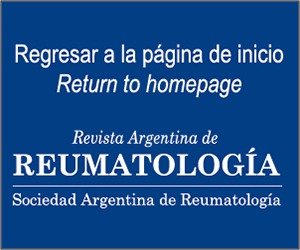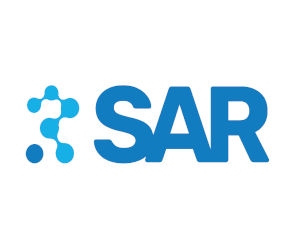Compromiso oftálmico en enfermedad relacionada con IgG4
Resumen
Introducción: la enfermedad oftálmica relacionada con IgG4 (EOR-IgG4) presenta una frecuencia del 11-59%. Pocos estudios describen las disparidades con los pacientes con ER-IgG4 extraoftálmica (NO EOR-IgG4). Objetivos: describir las características clínicas, imagenológicas, anatomopatológicas, resultados de laboratorio y tratamiento de la EOR-IgG4, y compararlas con las de los pacientes NO EOR-IgG4. Materiales y métodos: se realizó un estudio descriptivo sobre una cohorte de 54 pacientes con ER-IgG4. Se reclutaron 16 pacientes con EOR-IgG4 y 38 con NO EOR-IgG4. Se compararon ambos grupos. Resultados: la EOR-IgG4 predominó en mujeres. El 75% presentó afectación oftálmica bilateral. El antecedente de asma se asoció al grupo NO EOR-IgG4 (p=0,018). Los pacientes con EOR-IgG4 presentaron niveles séricos menores de IgE e IgG total, y la glándula lagrimal fue la estructura más afectada. Predominó el infiltrado linfoplasmocitario y eosinofílico, siendo la fibrosis estoriforme más frecuente que la no estoriforme en el grupo EOR-IgG4. Conclusiones: si bien los resultados fueron similares a lo reportado previamente, en discordancia con otras series, encontramos asociación negativa entre el asma y los niveles de IgG total sérica en los pacientes EOR-IgG4.Citas
I. Wallace ZS, Deshpande V, Mattoo H, et al. IgG4-related disease: baseline clinical and laboratory features in 125 patients with biopsy-proven disease. Arthritis Rheumatology Hoboken NJ 2015;67:2466-75.
II. Ebbo M, Paciente M, Grados A, Groh M, Desblaches J, Hachulla E, Saadoun D, Audia S, Rigolet A, Terrier B, et al. Ophthalmic manifestations in IgG4-related disease. Medicine (Baltimore) 2017;96(10):e6205.
III. Zhao Z, Mou D, Wang Z, et al. Clinical features and relapse risks of IgG4-related ophthalmic disease: a single-center experience in China. Arthritis Res Ther 2021;23,98.
IV. Gan L, Luo X, Fei Y, et al. Ophthalmic involvement disparities in clinical characteristics of IgG4-related disease: a retrospective study of 573 patients. BMC Ophthalmol 2021 Dec 27;21(1):447.
V. Umehara H, Okazaki K, Masaki Y, et al. Comprehensive diagnostic criteria for IgG4-related disease (IgG4-RD), 2011. Mod Rheumatol Jpn Rheum Assoc 2012;22:21-30.
VI. Umehara H, Okazaki K, Kawa S, et al.; Research Program for Intractable Disease by the Ministry of Health, Labor and Welfare (MHLW) Japan. The 2020 revised comprehensive diagnostic (RCD) criteria for IgG4-RD. Mod Rheumatol 2021 May;31(3):529-533.
VII. Wallace ZS, Naden RP, Chari S, Choi H, Della-Torre E, Dicaire JF, et al. The 2019 American College of Rheumatology/European League Against Rheumatism Classification Criteria for IgG4-Related Disease. Ann Rheum Dis 2020 Jan;79(1):77-87. VIII. Goto H, Takahira M, Azumi A; Japanese Study Group for IgG4-Related Ophthalmic Disease. Diagnostic criteria for IgG4-related ophthalmic disease. Jpn J Opthalmol 2015; 59(1):1-7.
VIII. Goto H, Takahira M, Azumi A; Japanese Study Group for IgG4-Related Ophthalmic Disease. Diagnostic criteria for IgG4-related ophthalmic disease. Jpn J Opthalmol 2015; 59(1):1-7.
IX. Miller A, Green M, Robinson D. Simple rule for calculating normal erythrocyte sedimentation rate. Br Med J (Clin Res Ed) 1983 Jan 22;286(6361):266.
X. Culver EL, et al. Elevated serum IgG4 levels in diagnosis, treatment response, organ involvement, and relapse in a prospective IgG4-related disease UK cohort. Am J Gastroenterol 2016 May;111(5):733-43.
XI. Chan ASY, Mudhar H, et al. Serum IgG2 and tissue IgG2 plasma cell elevation in orbital IgG4-related disease (IgG4-RD): potential use in IgG4-RD assessment. Br J Ophtahlmol 2017 Nov;101(11):1576-1582.
XII. Wallace ZS, Zhang Y, Perugino CA, et al. Clinical phenotypes of IgG4-related disease: an analysis of two international cross-sectional cohorts. Ann Rheum Dis 2019 Mar;78(3):406-412.
XIII. Kubota T, Moritani S. Orbital IgG4-related disease: clinical features and diagnosis. ISRN. Rheumatol 2012; 2012:412896.
XIV. Zachary S, Wallace Z, Deshpande V, Stone JH. Ophthalmic manifestations of IgG4-related disease: single-center experience and literature review. Semin Arthritis Rheum 2014;43:806-817.
XV. Gan L, Luo X, Fei Y, Peng L, et al. Long-term outcomes of IgG4-related ophthalmic disease in a Chinese IgG4related disease cohort. Front Med 2021;8:784520.
XVI. Wang L, Zhang P, Zhang X, et al. Sex disparities in clinical characteristics and prognosis of immunoglobulin G4-related disease: a prospective study of 403 patients. Rheumatology 2019;58(5):820-830.
XVII. Stone JH, Zen Y, Deshpande V. IgG4-Related Disease. N Engl J Med 2012;366 (6):539-51.
XVIII. Wu A, Andrew NH, McNab AA, Selva D. Bilateral IgG4- related ophthalmic disease: a strong indication for systemic imaging. Br J Ophthalmol 2016;100(10):1409-11.
XIX. Gan L, Luo X, Fei Y, Peng L, et al. Ophthalmic involvement disparities in clinical characteristics of IgG4-related disease: a retrospective study of 573 patients. BMC Ophthalmol 2021 Dec 27;21(1):447.
XX. Tiegs-Heiden LJ, Eckel CH, Hunt FE, et al. Immunoglobulin G4-related disease of the orbit: imaging features in 27 patients. American Journal of Neuroradiology July 2014; 35(7):1393-1397.
XXI. Wong AJ, et al. IgG4 immunostaining and its implications in orbital inflammatory disease. PLoS One 2014;9(10):e109847.
XXII. Sato Y, Notohara K, Kojima M, Takata K, Masaki Y, Yoshino T. IgG4-related disease: historical overview and pathology of hematological disorders. Pathology International 2010;60(4):247-258.
XXIII. Khosroshahi A, Wallace ZS, et al. International consensus guidance statement on the management and treatment of IgG4-related disease. Arthritis Rheumatol 2015;67(7):1688.
XXIV. Carruthers MN, Topazian MD, Khosroshahi A, Witzig TE, Wallace ZS, Hart PA, Deshpande V, Smyrk TC, Chari S, Stone JH. Rituximab for IgG4-related disease: a prospective, open-label trial. Ann Rheum Dis 2015;74(6):1171. Epub 2015 Feb 9.
XXV. Wang L, Zhang P, Wang M, et al. Failure of remission induction by glucocorticoids alone or in combination with immunosuppressive agents in IgG4-related disease: a prospective study of 215 patients. Arthritis Res Ther 2018;20:65.
XXVI. Carruthers MN, Stone JH, Deshpande V, Khosroshahi A. Development of an IgG4-RD responder index. Int J Rheumatol 2012;259408.
Derechos de autor 2023 a nombre de los autores. Derechos de reproducción: Sociedad Argentina de Reumatología

Esta obra está bajo licencia internacional Creative Commons Reconocimiento-NoComercial-SinObrasDerivadas 4.0.






